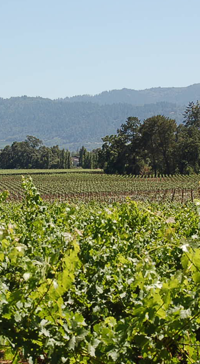California Wine Regions
California Wine Regions have been divided into Wine Appellations or AVAs (American Viticulture Areas) recognized by the federal government, (Tobacco Tax and Trade Bureau) for a distinctive combination of soil, climate and geographical characteristics identified in the wine. The word "appellation" is derived from the French verb "appeller" which simply means "to call" or "to name". The tradition of naming distinct wine regions and identifying them on wine labels originated from the French Appellation d'Origine Controlee laws as a way to ensure product quality and consistency within specific regions of France. The wine grape growers and winemakers in the California Wine Country began to push for a similar system of recognition in the United States in the mid-1970s.
Today there are over 100 different California Wine Appellations and many more are applying to become their own distinct AVA. California Wine Appellations listed on the wine label provides consumers insight to the geographical pedigree of a wine. Also, when a winery lists an AVA or appellation on its bottle 85% of the grapes must originate from the AVA. To get even more detailed, there are sub-AVAs, within the larger AVA. For example, Napa Valley is an AVA, but there are smaller regions within Napa Valley that have their own AVA. Oakville is a smaller AVA (sub-AVA) that is geographically located within the larger Napa Valley AVA.
If you go on a Wine Country Tour, you most certainly will visit a few different AVAs. A knowledgeable tour guide will be aware of the distinct California wine regions and able to explain the differences that make the AVA's unique. The uniqueness lies in climate, soil, elevation and specific wine characteristics that come from the land. You'll learn more about California Wine Country's distinct wine appellations by visiting this famed area with an expert tour guide.

